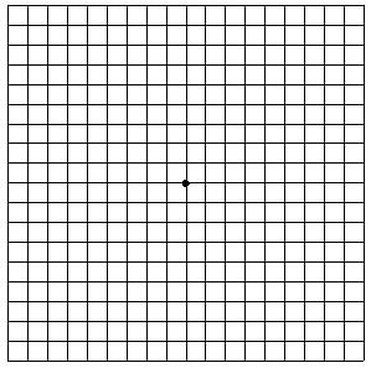Information About Age-Related Macular Degeneration
Age-related macular degeneration (ARMD) as the name suggests, is a condition that tends to become more common as people get older. It is the leading cause of severe vision loss among the elderly and approximately 25-30% of those aged over 75 show some signs of ARMD.
As our eyes age, the retina (the light sensitive tissue lining the inner surface of the eyeball) starts to deteriorate, making clear vision difficult. This is particularly true for the macula, the portion of the retina which is responsible for your central vision. Good central vision is necessary for common daily tasks such as reading, recognizing facial features, interpreting different colours and driving.
As our eyes age, the retina (the light sensitive tissue lining the inner surface of the eyeball) starts to deteriorate, making clear vision difficult. This is particularly true for the macula, the portion of the retina which is responsible for your central vision. Good central vision is necessary for common daily tasks such as reading, recognizing facial features, interpreting different colours and driving.
SymptomsThe most common symptom is the gradual blurring of central vision; it can be more severe in one eye. Clarity of vision can also fluctuate greatly with the level of lighting. The development of dry or wet ARMD occurs without causing any pain.
Wet ARMD can also cause disturbances to vision as the new blood vessels form a blister underneath the retina. This can mean straight lines appear wavy, broken, or distorted. By looking at the grid (See Below) you can test the amount of central vision affected and also whether any distortions are present. Who is at risk for ARMD?While the main risk factor is age, it can appear earlier and progress faster in smokers, those with high cholesterol and vascular disease. Those with immediate family members who have ARMD are at a higher risk of developing the condition, and women appear to be at greater risk than men.What can I do to protect my eye from ARMD?
Maintaining a healthy lifestyle can help reduce the risk of developing ARMD, especially the regular consumption of green leafy vegetables and fish, maintaining normal blood pressure and cholesterol, and the cessation of smoking if you are a smoker. The retinaThe retina is the innermost layer of tissue inside the eye. Its function is to transmit the images that we see to the brain. With age, waste products from the retina tend to accumulate between the retina and its underlying tissue. These deposits are called drusen and are readily observed by your optometrist.
Drusen can occur anywhere on the retina; however they have a tendency to accumulate underneath or around the macula region. Over time as the drusen become larger and begin to increase in number, the likelihood of developing ARMD becomes higher. As they cause a marked alteration of the tissue structure around the macula region, these changes can cause significant vision loss. |
Types of Age Related Macular DegenerationThere are two types of Types of Age Related Macular Degeneration:
'Dry' Types 90% of people with ARMD have this type. This is a very slow degeneration of the macula and central vision slowly becomes blurred over a long period of time. 'Wet' ARMD This is much less common; however vision can rapidly deteriorate. As the retina is starved of oxygen, chemicals are released to stimulate the growth of new blood vessels to resupply the retina with oxygen. These new blood vessels tend to be fragile and can leak. These leakages can cause severe and sudden vision loss. Consultation with your optometristMt Albert Optometrists will perform a number of tests to determine if you are at risk of developing ARMD, and, if you do have this condition already, can diagnose which type it is.
If you have wet ARMD in one eye you should have the vision in your other eye regularly assessed. You can help by self-testing, looking carefully at straight-edged objects such as a picture frame, or even better, by regular use of an Amsler Chart which you can pick up from Mt Albert Optometrists for no charge. (a copy of the chart is provided below) While wet ARMD is potentially sight threatening there are a number of treatments available to cause the growth of new blood vessels to regress. What treatment is available?Unfortunately there is no effective treatment for dry ARMD. There is some evidence that antioxidant therapy may help retard the progression of dry ARMD in the intermediate stages. There is an antioxidant formulation currently available specifically for ARMD; your optometrist can discuss whether this is suitable for you.
It is important to know that while there is not much that can be done to slow down the progression of dry ARMD, it is still important to have regular eye examinations. There are a number of conditions that can contribute to the blurring of vision and many are treatable. Your optometrist will be able to detect these conditions and manage them appropriately. ARMD understandably causes anxiety, apprehension and dread due to the fear of blindness. Your optometrist will give you advice and prescribe a variety of visual aids to maintain your independence and your quality of life as your level of vision changes. |
Amsler Grid
|

